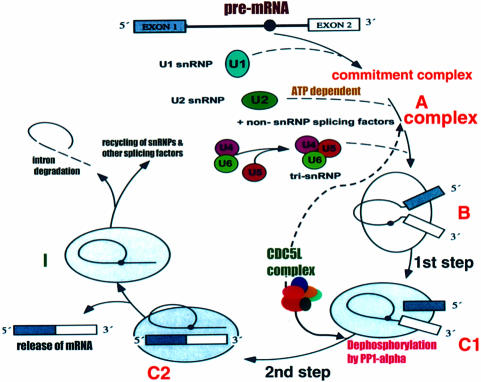Fig. 7. Schematic representation of the pre-mRNA splicing cycle showing the steps at which the CDC5L complex joins the cycle and facilitates catalysis. The diagram is similar to that produced in Lamm and Lamond (1993) with some modifications. The letters A, B, C1, C2 and I indicate the different steps in the cycle and the complexes formed. The continuous arrow originating from the CDC5L-associated complex in the figure shows the stage in the cycle at which the complex is required for splicing progression, whereas the broken arrow shows the step at which CDC5L joins the cycle. Although our data suggest that the CDC5L complex is needed for progression through the second catalytic step of pre-mRNA splicing, we observed (by immunoprecipitations of pre-spliceosomal/spliceosomal complexes with anti-CDC5L at different time points; data not shown) that the protein associates with the pre-mRNA splicing machinery quite early on in the pathway in an ATP-dependent manner, perhaps concomitant with U2 snRNP binding. The reason for this early association of the CDC5L protein complex with pre-mRNA is still unclear. Dotted lines between steps in the figure indicate that several events may be involved.

An official website of the United States government
Here's how you know
Official websites use .gov
A
.gov website belongs to an official
government organization in the United States.
Secure .gov websites use HTTPS
A lock (
) or https:// means you've safely
connected to the .gov website. Share sensitive
information only on official, secure websites.
